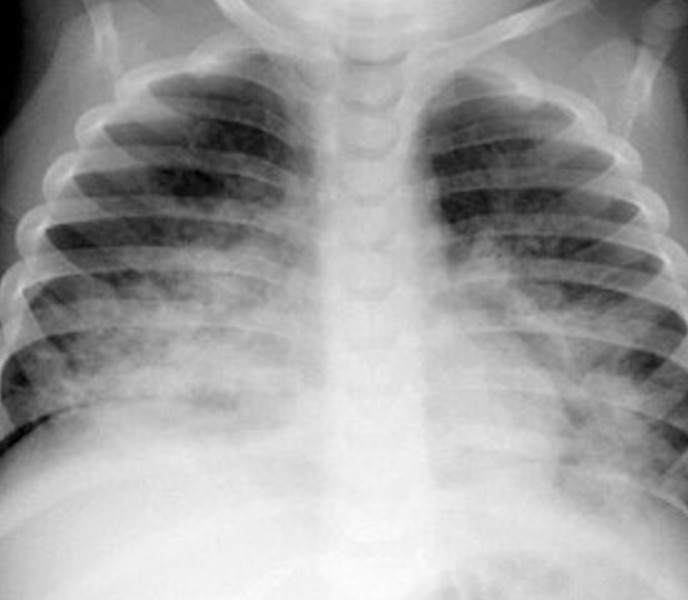|
|
Hydrocarbon Poisoning
General Considerations
- These substances include gasoline, kerosene, lubricating and motor oil, mineral spirits, paint, glues, rubber cement and lighter fluid
- Accidental ingestion is most common and usually occurs in children under five
- The target organs from ingestion are the lungs, (most commonly), nervous, cardiac, hepatic, renal, hematologic and dermatologic
- The lower viscosity of the substance, the higher the chance of aspiration
- Aspiration is the most commonly reported adverse effect of hydrocarbon ingestion
- Aspiration produces a direct toxic effect on lung parenchyma resulting in a pneumonitis
- Hemorrhagic alveolitis can peak 3 days after ingestion
Clinical Findings
- Respiratory symptoms can be delayed several hours after ingestion
- Cough and hypoxia
- Cyanosis
- Fever
Imaging Findings
- Initially, the chest radiograph may be normal
- Symptomatic patients should have a chest x-ray
- Asymptomatic patients may have a chest x-ray 6 hours after ingestion
- Findings include airspace disease which may be patchy at the onset but coalesce later, particularly in the lower lobes medially
- The pattern is similar to, and may represent in some cases, pulmonary edema
- Pneumatoceles may form after the first week
Treatment
- Airway, breathing and circulation support
- Use of emetics is contraindicated
- Gastric lavage may be performed
- Antibiotics

Hydrocarbon Aspiration/Pneumonitis. There is bilateral lower lobe airspace disease, centrally located in the 9 month old child who had ingested kerosene (From Radiology, Resource and Review)
Hydrocarbon Toxicity. MD Levine and C Gresham. eMedicine.
|
|
|